Steps to Creating a Custom Prosthesis
Every patient’s amputation situation is unique. All prosthetic limbs are custom fitted to meet each patient’s specific needs and lifestyle. There are many important steps from beginning to end that will ensure a comfortable fit.
The first step to a successful experience is a consultation. At the consultation, many questions are asked. Your lifestyle, activity level, personal interests, employment, leisure activities, are all very important in determining which type of prosthesis will best suit your needs. It is also imperative that the prosthetist work with the physician who is performing the surgery. This way the prosthetist can get all of the details of the operation, so he or she can better design a prosthesis that meets your individual needs.
Once you have determined, along with your physician and prosthetist, the style of prosthesis you need, measurements will be taken to capture the shape of your limb. If possible, a prosthetist will take measurements of your limb pre-surgery. This can be a tremendous help as it allows the specialist to expertly size the prosthesis. Once the surgery is complete you will most likely be fitted with a post-op prosthesis that helps reduce swelling, reduces pain and assists you in your adjustment period. This is only a temporary prosthesis until you are fully healed. Once the swelling has gone down and you are fully healed, the prosthetist can start creating the prosthesis.
Computer-aided design (CAD) and manufacturing (CAM) are often used to enhance the fit, function, and efficiency of each patient’s prosthesis. This technology is imperative in getting the right fit and comfort for the patient. Once your new prosthesis is created specifically for your needs you can begin the process of learning how to utilize it to its fullest potential.
After the amputation and prosthetic device fitting, you must then go through physical therapy. It can be very tough for an individual to learn how to walk using a prosthetic leg or brush your teeth with a prosthetic hand. Physical therapy is vital on your journey as a new amputee. You need to focus on how to use your new prosthesis for life’s activities. During physical therapy, you and your prosthesis will be closely monitored and any necessary adjustments will be made.
Throughout this time, your prosthetist will pay close attention to the interface between your residual limb and the prosthesis. Due to the fact that the swelling is finally diminishing, your residual limb will likely shrink in the months following surgery.
The new prosthesis may have to go through some altering in order to match the reduction in size that occurs. You will go through a major life changing adjustment period and your prosthetist, nurses, physical therapists, peer counselors, friends, and family are all there to support you. You will continue visiting the prosthetist throughout your life. As time goes by your prosthetic providers will continue bringing you the latest technological advances in prosthetic design.
There are many factors involved in creating a custom prosthesis. You can be assured that your prosthetist is expertly qualified to bring you the best prosthesis for your lifestyle and will be by your side to make sure you have the best fit and function available throughout your life.





